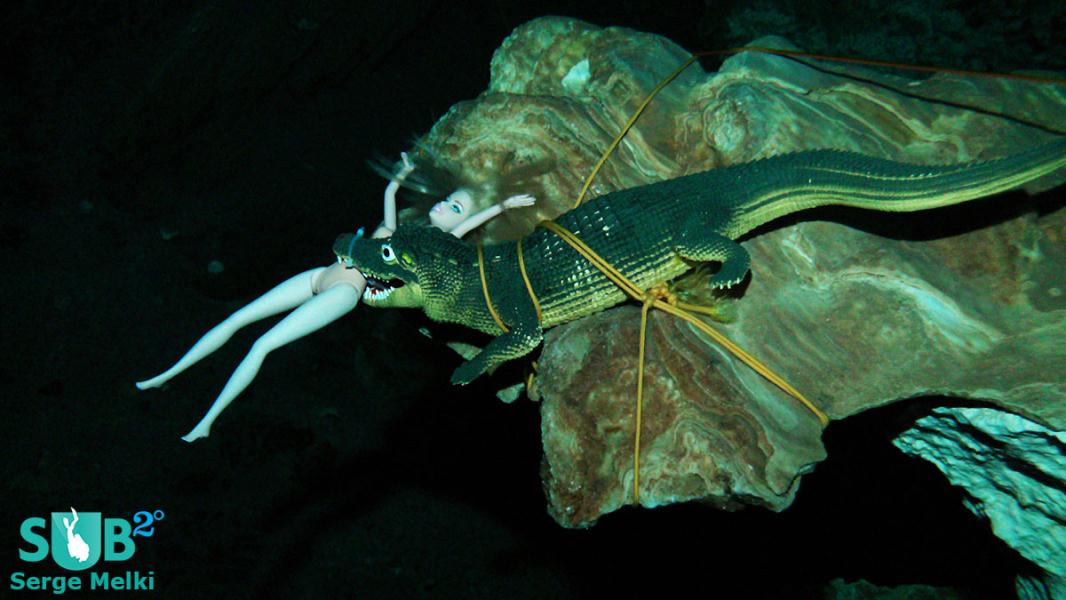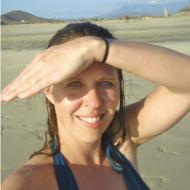 Directory of 9 Dive Sites or Spots for Scuba Diving in Yucatan Peninsula Costa Maya and Banco Chinchorro, Mexico
Directory of 9 Dive Sites or Spots for Scuba Diving in Yucatan Peninsula Costa Maya and Banco Chinchorro, Mexico
Part 2: Dive Sites, Marine Life & Environment in Yucatan Peninsula Costa Maya and Banco Chinchorro, (Mexico)
Banco Chinchorro, offshore from the southern border where Mexico and Belize meet, is an amazing and unique place to dive in Mexico. The Banco Chinchorro coral atoll is far wilder and more isolated compared to the busy world of Riviera Maya and Cancun to the north. The slightly oval shaped coral atoll has three islands: Cayo Norte, Caye Central and Cayo Lobos. The islands have mangroves and scampering crabs and a few fishermen who live in stilted homes. In 1996, Banco Chinchorro was named a Biosphere Reserve and is patrolled and protected by the Mexican government. It is very difficult for local dive operators to get permits to take scuba divers out onto the atoll. It is possible if you have a large enough group of divers, a registered dive operator and good weather to organize a day trip to this protected submerged world.
In the scuba diving community, the elusive Banco Chinchorro is famous for its shipwrecks- genuine shipwrecks old and new; there are no artificial reefs that have been created on the atoll. Most of the wrecks are in extremely shallow water, less than 10 meters, and are in the surf zone making these dive sites very difficult and dangerous. The authorities do not allow divers on most of the wrecks, to protect the coral as well as the divers.
There are two Spanish Galleon wrecks on Chinchorro that can be snorkeled over. The 40 Canons wreck site, near Cayo Norte, is the resting place of a 17th century Dutch galleon whose huge anchor and 16 of the original 40 cannons can easily be seen as you snorkel in the shallow 10-15 feet deep water. Thieves stole the other 24 cannons partly explaining why the Mexican government currently forbids scuba diving on the site.
In 2005, Hurricane Wilma ravaged the Atlantic and Yucatan Peninsula and a ferry boat named Cozumel washed south and hit the atoll, it sits upright for the most part and largely out of the water.
If you can get there and you are not so attached to wreck dives, Banco Chinchorro is a great place for beginner and advanced divers alike. Most of the wrecks are in rough, shallow waters on the eastern side of the atoll, whereas the western side is where the great diving and show of coral and marine life makes for amazing dive sites. Along the western shore of Banco Chinchorro, you will find beautiful reef formations, huge barrel sponges, brain coral, and black coral that are uniquely large and vibrant. The sloping edge of the atoll are perfect for exploring at 30 feet depths for long peaceful dives where you can really experience the marine life and coral formations. Pilot whales and bottlenose dolphins as well as spotted eagle rays are common in the area during certain peak times of the year.
Some of the best dive sites on the western side of Chinchorro include The Garden just south of 40 Canons. The Garden sits in 60-80 feet of water and puts on a show that lives up to its name and is suitable for all levels of scuba divers. Punta Gonzalez and nearby Kai Ha are two sites that are located off Banco Chinchorro's Cayo Centro. Punta Gonzalez is in 40-90 feet of water along a gentle ledge where you can drift and view the amazing coral formations and catch sight of eagle rays, sea turtles and lobsters. Nearby Kai Ha just to the north is in 30-65 feet of water, making it a relatively easy and enjoyable dive site where you will see many fish such as the delicate and colorful French Angelfish and Queen Angelfish.
The fishing village of Xcalak is found in the southern realm of Costa Maya southeast of Chetumal. Most dive sites near Xcalak are only 5-30 minute boat rides with a local dive shop captain. You will get to explore fantastic dive sites along the barrier reef that parallel most of the shore along Costa Maya.
The popular, but never crowded, dive site known as La Poza is less than a kilometer south of the village of Xcalek. There you can explore the remains of a sunken cenote wall and enjoy a mellow but amazing shallow dive perfect for beginners and advanced divers alike. The depth of La Poza is only about 20 meters at maximum. The dive site is also known as Tarpon Hole, where you can see schools of the large silvery tarpon that sports fishermen dream of.
There are many great dive sites in the area including the swim through dive site called La Pozeta just south of La Poza. For advanced divers check out La Chiminea with a maximum depth of about 30 meters, about 3 km south of Xcalek. The depth is not what makes La Chiminea advanced of course; it is the wall drop where you enter a cavern then a swim through up an underwater canyon. There are so many sites to explore along this amazing reef lined coastal area.
Top Dive Shops
Certifications Offered
-
Discover Scuba Diving
Doctor Dive Costa Maya , Yucatan Peninsula Costa Maya and Banco Chinchorro -
Open Water Diver
Doctor Dive Costa Maya , Yucatan Peninsula Costa Maya and Banco Chinchorro -
PADI Scuba Diver
Doctor Dive Costa Maya , Yucatan Peninsula Costa Maya and Banco Chinchorro

